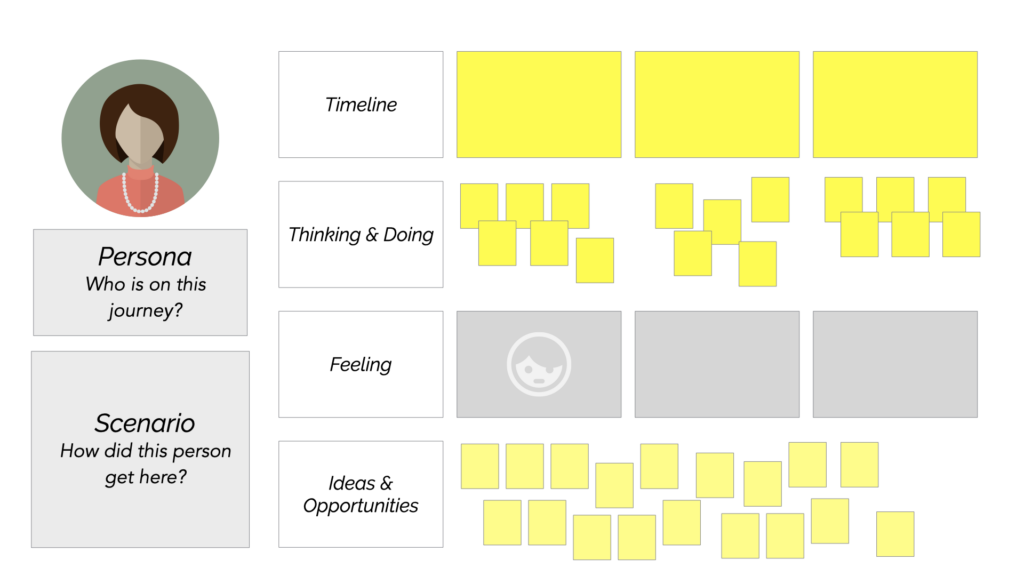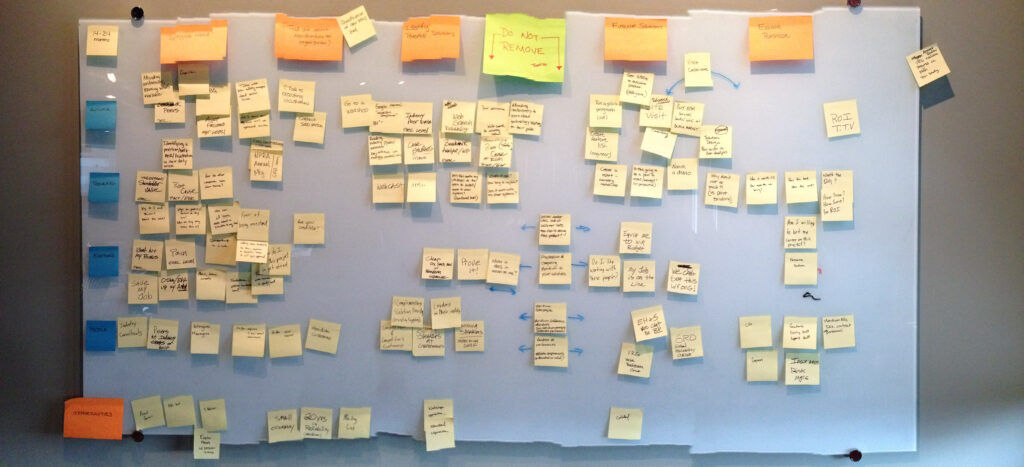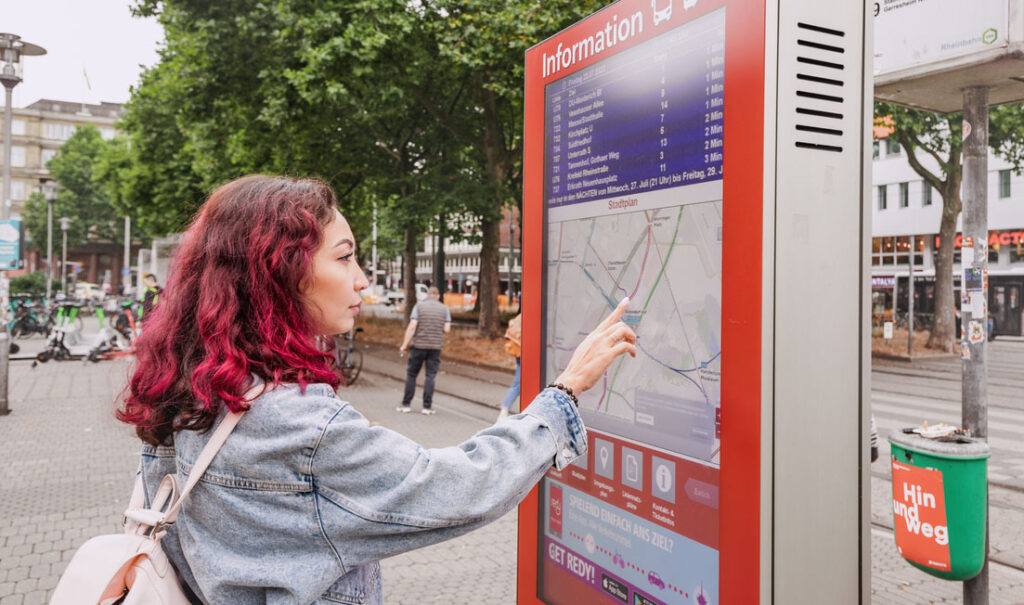An experience map depicts the possible journeys each audience has or should have with your organization both on the website and through other channels. It also serves as a powerful tool to communicate our vision to other stakeholders.
An experience map includes:
- Depictions of how people interact with the website at each stage of the experience
- User thoughts, motivations, and feelings
- Opportunities to improve the experience
- Broad outlines of the online communications picture across contexts and devices
It’s also important to understand how people enter the site and what happens with the journey from there. When we create an experience map, we analyze top entrance paths from search engines and outside sites. This allows us to plan for journeys that begin at deeper pages.

Facilitating an Experience Mapping Workshop
This exercise allows the group to take a deep, multi-faceted look at the journey people have with an organization, product, or service. When we use this to develop web strategy, it helps us consider how the website fits into the broader experience.
During this exercise your participants may uncover interesting functionality or content ideas that they might not have considered otherwise.
You can run this workshop using your favorite online whiteboard tool, but you can also conduct it in person (which we prefer), you’ll need:
- Roll of butcher paper and some way to mount it to the wall
- Sticky notes, blank paper, other office supplies for creating a diagram on the butcher paper
- Markers or pens
- Audience research reports OR participants who represent your audiences OR participants who interact with your audiences on a regular basis.

Experience Mapping Steps:
- Identify the audiences or personas whose journeys you want to map.
- On the left X-axis, create sections for:
- Doing – What physical, visible actions are they taking at this stage? Or what do we want them to do in the future if we create whatever we’re going to create?
- Thinking – What questions, ideas, thoughts are they having at this stage?
- Feeling – What motivations, delights, fears, concerns are they experiencing at this stage?
- Content/Engagement – How we engage them through:
- Digital (web, email, search, social etc)
- In-Person
- Other Opportunities – What else could we do or provide that would better support the journey at this stage?
- On the top Y-axis, create sections for each broad stage of the journey. For example, if you’re mapping out a family vacation experience, you might use:
- Dreaming about possible vacations
- Choosing vacation with family
- Planning vacation
- Taking vacation
- After the vacation (sharing, connecting, etc)
- Have participants brainstorm (or draw from research) what’s happening in each X-axis category for each Y-axis stage of the journey. This could be done with sticky notes, sketches or whatever.
- Participants place their items on the butcher paper and then work together to create a diagram that makes some sense.
- Using these journeys, participants then identify opportunities where we can bridge a gap, make the experience better or smoother.
Learn more about Experience Mapping
- Mapping Experiences book by James Kalbach, O’Reilly Publishing
- UX Mapping Methods Compared: A Cheat Sheet (Nielsen Norman)

